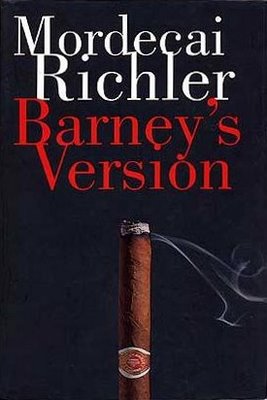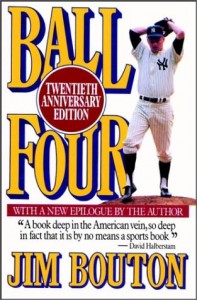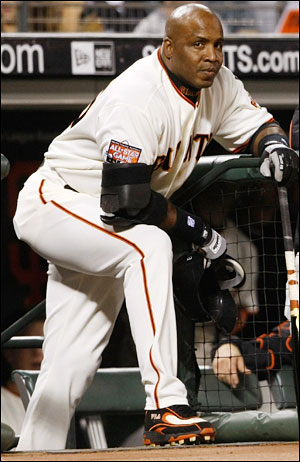Book review – The Way of Baseball
As I've alluded to once or twice, I used to work for the World's Biggest Bookstore in downtown Toronto, a part of the Chapters-Indigo chain.
About the same time I moved on to being a professional writer many of my coworkers at the WBB also moved on to bigger and better things, including my manager Justin Sorbara-Hosker, who now works for Indigo's online department.
A couple of weeks ago Justin and the staff at Simon and Schuster were kind enough to forward me a copy of Shawn Green's new book "The Way of Baseball" which I reviewed for Indigo's blog.
Below is my introduction, followed by a link to the rest of the article.
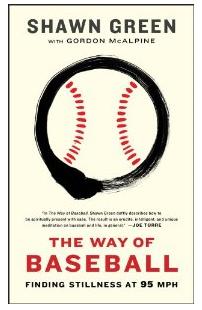 Shawn Green's The Way of Baseball has a concept so simple it's amazing no one has done it before—it uses hitting a baseball as an evolving metaphor that can be applied to everyday life.
Shawn Green's The Way of Baseball has a concept so simple it's amazing no one has done it before—it uses hitting a baseball as an evolving metaphor that can be applied to everyday life.
Green draws on his career as a right-fielder with the Toronto Blue Jays, Los Angeles Dodgers, Arizona Diamondbacks and New York Mets and examines how he used batting practice as a method of finding peace and balance in his day-to-day life.
The book is broken into nine chapters titled “Stillness,” “Space and Separation,” “Awareness,” “Ego,” “Presence,” “The Zone,” “Nonattachment,” “Gratitude,” and “Epilogue”. Each section details a step in Green’s personal journey as he develops stillness and awareness at the plate and in his interactions with teammates, coaches and fans.
Farewell Wizard
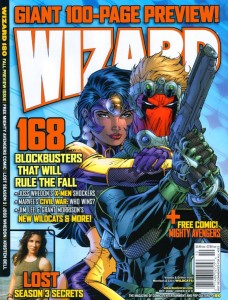 Wizard Entertainment announced on Monday that it has ceased publication of its Wizard and Toyfare magazines, bringing an end to one of the pillars of my childhood.
Wizard Entertainment announced on Monday that it has ceased publication of its Wizard and Toyfare magazines, bringing an end to one of the pillars of my childhood.
Although I hadn’t bought the magazine in years or read it in months, I’m sorry to see it go. It was a big part of my adolescence – I still have a stack of issues sitting at my dad’s – and helped shape me as both a writer and as a person.
Since 1991 Wizard has been the go-to source for most comic book fans. The monthly magazine featured news items, interviews, how-to articles, reviews, previews and just about anything else you can imagine involving comics, all in an irreverent and fun package.
It was that flippancy and sense of humour that has informed my personal and professional style. Although journalism is rarely an appropriate venue for sarcasm, it certainly has its place on this blog, on my Twitter feed, on Facebook and most especially in person.
Every so often I’m reminded of one of Wizard’s jokes or particularly funny turns of phrase and I still laugh.
For example, like the Marvel Comics of the 1980s and early 1990s, Wizard always had a page dedicated to the antics of its bullpen of staff.
In that space they often discussed the escalating prank war amongst the magazine’s different departments, including a gag where three staff members took thousands of photocopies of their faces and plastered them all over their rival’s offices. Into file folders, on computer screens, covering phones, cut into slices and taped to the individual slats of venetian blinds. Everywhere.
Years later, when my friends Wes and Ruben wanted to prank our friends Kate and Hannah, I knew just what to do. Nearly $150 at Kinko’s and hours in the girl’s apartment later, and we’d covered every square inch with black and white copies of our faces, all with the staff of Wizard as our inspiration.
But the slick magazine’s reach extended far beyond its sophomoric humour.
As Matt Demers of NerdGirlPinups.com points out “Wizard showed me that a person could take something that he/she enjoyed and make a living at it. The articles were written with passion and flair, and exposed me to the deeper side of comics' fandom.”
Basically, being a writer for Wizard was what I aspired – really, still hope - to be. It helped show me that it’s possible to make a living being creative and doing what you love.
But as much as Wizard was a positive influence on me and my work, it also served as a cautionary tale in two respects.
First, it was often criticized by comic fans and professionals alike for essentially becoming a catalogue for the industry’s two biggest publishers - Marvel Comics and DC Comics - and generally ignoring smaller or independent printing houses.
Obviously, this underscored the need not just for journalistic integrity, but to have diversity in your coverage. If you’re going to develop a beat and report on something like the comics industry, you should not neglect any corner, no matter how insignificant it may seem.
Second, despite its decidedly nerdy demographics, Wizard never really expanded on to the internet. Yes, they had a website but it never had any news or really any content beside subscription information or the details on their series of conventions.
I think this was their ultimate undoing. Wizard was in a position to get in on the ground floor of the Internet boom with a hardcore audience that would presumably be web savvy. WizardUniverse.com could’ve been ComicsAlliance nearly a decade before there was a ComicsAlliance.
Instead, publisher Gareb Shamus stuck with Wizard’s out-dated print-only business model. Ironically, they plan to launch WizardWorld.com, an online comics magazine in February, but it’s obvious to everyone that the cat is out of the bag with several competitors already well-established online.
Farewell Wizard, it’s been fun. You taught me a lot about comics, writing and journalism both in life and in death, but your time had come.
Book Review – The Book of Basketball
 The Book of Basketball seemed like the perfect book for me, a natural fit.
The Book of Basketball seemed like the perfect book for me, a natural fit.
But Bill Simmons’ magnum opus, although entertaining and somewhat informative, fell short of my expectations.
You see, like most Canadians, I don’t know a lot about basketball. Sure, I watch maybe a game per week, I know the big name players and I certainly respect their athleticism and the skill necessary to play in the National Basketball Association.
But that level of interest pales in comparison to my obsession with hockey. That’s just the sad truth: In Canada, basketball always plays second fiddle to hockey. From an early age we’re all ingrained with an understanding of hockey that fuels our fascination.
It’s hard for any sport, especially one that runs at roughly the same time as the National Hockey League, to gain any kind of popular traction amongst Canadians.
What it boils down to for me is this: if you gave me a TV with only two channels, one broadcasting the classic 1986 NBA Finals with Magic Johnson’s Los Angeles Lakers facing Larry Bird’s Boston Celtics and the other showing a pre-2004 lockout game between the New Jersey Devils and Minnesota Wild, I’d probably end up watching the hockey.
However, I’m always trying to broaden my horizons, especially when it comes to sports and writing, and so I want to expand my basketball knowledge base.
Further, Simmons has always impressed me as an imaginative writer who can inform and amuse. Anyone who’s read his blog or followed him on Twitter knows he has a deep and abiding passion for basketball, so it seemed like reading his tome would be the perfect way to familiarize myself with the game.
There’s no denying that I learned a lot from Simmons’ 736 page treatise on every imaginable detail of professional basketball. His meticulously researched book does a lot to explain the evolving styles of play as well as the different personalities that have made up the NBA and American Basketball Association.
His lengthy footnotes and parenthetical asides made me laugh out loud and his pop-culture references are always on point. He’s got a gift for keeping sections that would otherwise be deathly boring fun and fresh. Unfortunately, they also add about an extra 100 pages to an already lengthy book.
That’s just one symptom of this book’s fatal flaw: it is poorly edited. Simmons should’ve been reined in to try and keep the book and more manageable length.
Further, a more consistent naming protocol should have been used. Player’s first names, last names and nicknames are used interchangeably from paragraph to paragraph, sometimes sentence to sentence. Although it can lead to some echoes in the writing, sticking to a standard would have lowered the word count - and in a book this big that could end up cutting some pages – and would have made the book more accessible.
This is where the book ultimately failed me.
As a survey of the history and players of professional basketball, the Book of Basketball seemed like the ideal entryway for a novice fan trying to learn about the sport. But it seems as though Simmons never really decided who his target audience was going to be, and so his narrative swings from being explanatory and appropriate for the new fan, to detailed and filled with in jokes only a long-time NBA fan would get.
Writing a book for the sophisticated fan is fine, but it should be advertised as such and be consistent in its level of accessibility. Unfortunately, the Book of Basketball is all over the map in comprehension, making it a frustrating read.
Bill Simmons’ Book of Basketball is funny and smart, but could’ve used a more firm editorial hand to rein in some of the author’s lengthier footnotes and asides to make a slightly more concise book that is accessible for all readers.
My Top 10 Essential Sports Books
My friend Justin asked me to write a blog post of my top 10 essential sports books, and, well, who am I to deny my faithful readers?
Justin didn’t give me much of an outline beyond the fact that they should be non-fiction and that they’re books that would be essential for starting anyone looking to start a personal sports library.
I decided to interpret “essential” as a book that is timeless, has a broad scope that makes it accessible and, of course, features strong writing.
Variety was also a watchword when I put this together. When it comes to writing not all sports are created equal – coming up with a list of 10 baseball books is a snap, while naming even five essential hockey books can be tricky.
However, I did manage to get a decent spread of sports. Baseball, hockey, soccer, football, professional wrestling and other combat sports are all well represented.
I should also add that this list is designed to be taken as a whole. Many of these books are meant to dovetail with each other, provide contrast or compliment other entries.
They don’t need to be read in any particular order and none of them stand out as the best of the lot. But taken altogether all ten fit together nicely, giving the reader a reasonably broad understanding of sports and athletics, even if some specific sports are left out.
Of course, I’ll also point out that I’ve read all of these books (titles that have a link will take you to my earlier, full reviews of the book). Since I haven’t read every sports book ever there are, I’m sure, some gaps in my selections.
Now, in no particular order of preference:
The grand daddy of ‘em all, Ball Four is Jim Bouton’s memoir of a year as a major league pitcher with the Seattle Pilots and later the Houston Astros. This book is the first real, hard-hitting look at the world of baseball – or any sport for that matter. Incendiary when it was released in 1969, Bouton’s book remains funny and insightful. Context will help you enjoy it, but 75% of the book can stand on its own. Admitedly, some of its power has been lost to time, but definitely worth reading, particularly the sections on some of Bouton’s more famous colleagues like Mickey Mantle and Ted Williams.
Bullpen Gospels by Dirk Hayhurst
Another relief pitcher’s memoirs, Bullpen Gospels comes from a more sincere and self-deprecating perspective. Dirk Hayhurst’s book on his year in the San Diego Padres’ minor league system is less about baseball and more about finding himself and trying to make some sense of the mess that is his life. Bullpen Gospels’ introspective narrative gives the reader a glimpse inside the surprisingly fragile psyche of a professional athlete and stands in contrast with Bouton’s groundbreaking work. It’s amazing to see how things have changed in the 50 years between the two memoirs. That said, some things never change – like baseball players womanizing ways.
Living on the Black by John Feinstein
My third pick also features professional baseball pitchers, but manages to be completely different from the earlier entries. John Feinstein’s tome (it’s a hefty 508 pages) follows the 2007 seasons of soft-tossers Tom Glavine and Mike Mussina. Living on the Black discusses the history of the players association and explains the ongoing evolution of the pitcher. Reading this book gave me a much stronger understanding of the importance of every pitch and every at bat of baseball. This book comes as close to explaining the art of big league pitching as anyone can without actually suiting up.
Searching for Bobby Orr by Stephen Brunt
Stephen Brunt’s biography of Bobby Orr – certainly the best defenceman of all time, and arguably the best hockey player ever – is marked by the fact that it was totally unauthorized. The seasoned Globe and Mail columnist had to dig deep for years to find anyone willing to speak to him about the very private Orr. All that hard work paid off as Brunt paints a rich portrait of a complicated man who revolutionized the sport of hockey on and off the ice. Searching for Bobby Orr is worth reading if just to be immersed in Brunt’s breathless description of Orr’s trademark end-to-end rushes. A must read for understanding the modern National Hockey League.
Hitman by Bret Hart
Although professional wrestling isn’t really a sport, there’s no denying the athleticism of the performers. Bret Hart’s upbringing as the most prominent member of the Hart family of wrestlers puts him in a unique position to describe the crazy lifestyle of the World Wrestling Federation. At the same time, Hart’s incredibly violent home life, coupled with his constant marital infidelity is engrossing and makes this the grittiest of all the entries on this list. This autobiography is, in a word, jarring. There is no book that is so open and honest about the sex and violence that pervades the lives of professional athletes.
 A Fighter’s Heart by Sam Sheridan
A Fighter’s Heart by Sam Sheridan
The only sport that comes close to baseball’s massive catalogue of books is boxing. Unfortunately, the sweet science is only one corner of the world of combat sport. Therefore, I chose Sam Sheridan’s survey of all sports where athletes fight – from boxing to Brazilian Jiu Jitsiu to mixed martial arts and, yes, even cock fighting – to try and encompass one of the more literary sports. Sheridan tries valiantly to understand the role that organized combat has in society and what it is about prizefighting that attracts competitors and spectators alike. An intersting and thought-provoking read that provides insight into the fringes of professional sport.
How Soccer Explains the World by Franklin Foer
Like A Fighter’s Heart, Franklin Foer’s How Soccer Explains the World tries to figure out the role of sport in a greater socio-political context. Foer’s theories are a little over-simplistic and he’s not without his biases, but nonetheless it’s an excellent book that successfully draws connections between political movements, sectarianism and nationhood with soccer teams around the world. An excellent sports book for the non-fan, and enjoyable and informative for anyone who believes that sport is an integral part of society.
Friday Night Lights by Buzz Bissinger
You’ve probably seen the movie or the TV show, but as good as they are, they just don’t do justice to Buzz Bissinger’s original examination of high school football in the oil town of Odessa, Texas. Although he doesn’t draw conclusions like Sheridan or Foer, Bissinger goes into greater depth than the other two books. Dark, sure, but Friday Night Lights does an incredible job of showing, at least on a small scale, how important sports can be to a community. By the final chapter you might not feel like a Permian Panther, but you’ll definitely sympathize with these young men.
Moneyball by Michael Lewis
Possibly the most influential book on this list, Michael Lewis’ Moneyball is often misunderstood as being a kind of baseball strategy guide. Really, it’s all about Oakland Athletics’ general manager Billy Beane squeezing the potential out of undervalued properties – in this case, baseball players. It’s a philosophy that goes well beyond the world of baseball, and the book’s become popular in many business circles. There’s lots to learn from Lewis’ most popular book: the intricacies of baseball trades, the importance of walks and the rigidity of old school baseball. Stay ahead of the curve by picking it up before Brad Pitts’ film adaptation comes out.
Fever Pitch by Nick Hornby
Speaking of books being ruined by movie adaptations – please ignore the romantic comedy starring Jimmy Fallon and Drew Barrymore loosely based off of Nick Hornby’s Fever Pitch. It’s barely related to the original. Few books capture the agony of cheering for a team that just never gets it together. You can sustitute any number of clubs for Hornby’s Arsenal. The Chicago Cubs, Detroit Lions and Toronto Maples Leafs will all do fine. This is what fandom is all about: not the highs of winning a championship but the agonizing lows where every bounce goes for the other side, where every home game gets rained on and every draft pick is a bust. Hornby captures that pain perfectly.
Graphic Novel Review: The Rocketeer: Complete Adventures by Dave Stevens
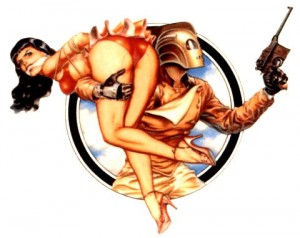 Sometimes it’s hard to articulate your feelings about a book or movie. Other times it just comes to you, like when I recently finished reading The Rocketeer: the Complete Adventures, a reprinting of Dave Stevens’ seminal series that was originally published n 1982.
Sometimes it’s hard to articulate your feelings about a book or movie. Other times it just comes to you, like when I recently finished reading The Rocketeer: the Complete Adventures, a reprinting of Dave Stevens’ seminal series that was originally published n 1982.
I found myself saying: “Really? That’s it?”
Not that it was a knock on the content of the book. The artwork is gorgeous and really pops thanks to the re-colouring done for this edition by Laura Martin. Stevens’ stories are good too, with some decent action as stunt pilot Cliff Secord learns to use a stolen jetpack and win back his best girl, Betty.
Stevens does an excellent job of building a sense of suspense, particularly in the second story “Cliff’s New York Adventure”. It’s a nice touch that he incorporated his hero into the Wold Newton Universe, having him work alongside the Shadow and with associates of Doc Savage.
But that’s the final story. There’s only two.
This was not what I was expecting, at all. As I made my way through the book I was waiting a third and final act that would match up with the ending of the 1991 film adaptation starring Billy Campbell and Jennifer Connelly. That climax never comes.
Instead, the Complete Adventures end with Secord leaving New York City for Los Angeles, with the expectation that he’ll be reunited with his girlfriend Betty. There should be another third to this book, but it just ends on that note. It’s an anti-climactic end to an otherwise enjoyable book.
I guess that’s the rub: those first two stories really are great. They’re fun and pulpy and in many ways are like Alan Moore’s Tom Strong.
But with any of the Tom Strong books there’s a sense that these are just a few of hundreds if not thousands of stories, and theyère much more detailed and fulfilling. The Rocketeer leaves you hanging.
It’s a shame that there wasn’t more to the series, and even worse, there never will be since Stevens passed away in 2008.
All in all, The Rocketeer: the Complete Adventures is a fun read and it has gorgeous artwork, but it’s disappointing that it’s so short and, ultimately, feels incomplete. It's a great concept, I just wish there was more of it.
If you’d like to read a second opinion, I’d recommend Chris Sims’ review of the Complete Adventures from December 2009.
Book Review: the Imperfectionists by Tom Rachman
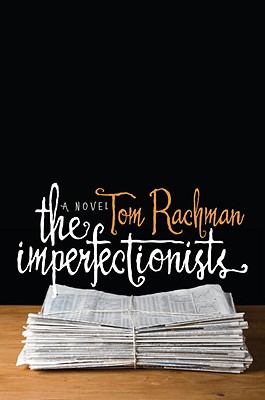 As much as I love reading, it’s rare that a book leaves me breathless. Tom Rachman’s the Imperfectionists does just that, over and over again.
As much as I love reading, it’s rare that a book leaves me breathless. Tom Rachman’s the Imperfectionists does just that, over and over again.
Rachman is a London-born journalist who has worked all over the world and he chose a familiar subject for his debut novel – the newsroom of an English-language paper in Rome.
Each chapter revolves around a different staff member or reader, with many of their stories intersecting and building on previous episodes. At every interval there is a short story about the history of the paper, colouring in some of the background of the main storyline.
It’s a masterful plot structure, deftly done, especially for a first-time novelist. The way the disparate characters and storylines intertwine and relate shows how skilled Rachman is as a storyteller.
The book had been recommended to me by my fiancé, who knew it’s tales of deadline drama in a newsroom would appeal to me, and she was spot on. Although Rachman never stoops as low as cliché or caricature, many of the characters rang true.
All of the characters are sketched out with a deft touch rarely seen in even the best authors, let alone by a first-timer. Rachman’s cast are remarkably realistic and likeable, creating sympathy for the characters and disappointment when things inevitably turn sour for the protagonists.
That’s really my one complaint about the Imperfectionists – it’s unrelentingly depressing. No good deed goes unpunished in Rachman’s world. Characters are craven and selfish. Infidelity is common with everyone ending up alone. Even success comes at a great cost in this world.
Half-way through I was dying for at least one good thing to happen to a character. Some sort of ray of hope, one chance at redemption. Anything! I was desperate for a lifeline, but it never came.
No, Rachman never gives up on his dark outlook, with the final chapter being one of the most heartbreaking.
Despite that, the Imperfectionists is an excellent read that will impress you with its complex structure. Although I was introduced to it because of my occupation as a journalist, I think this book would appeal to anyone. Definitely worth checking out.
Book Review: Bullpen Gospels by Dirk Hayhurst
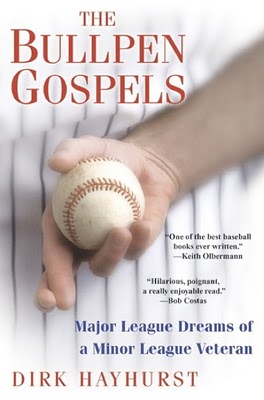 Halfway through Dirk Hayhurst’s Bullpen Gospels it occurred to me that I was reading one of the best books on baseball, ever.
Halfway through Dirk Hayhurst’s Bullpen Gospels it occurred to me that I was reading one of the best books on baseball, ever.
That’s some strong talk, particularly for someone who hasn’t read the entire baseball canon. But I’m getting there - just about every other book I read is about baseball.
I’ve devoured Jim Bouton’s Ball Four more than five times, I loved John Feinstein’s Living on the Black and Michael Lewis’ Moneyball. Also, as fans of this blog know, I’ve reviewed the graphic novel Satchel Paige:Striking Out Jim Crow as well as Sports Illustrated’s Great Baseball Writing.
The Bullpen Gospels slot in right above all of those, including Ball Four, my previous titleholder.
They’re comparable books too. Both are written by professional baseball players who find themselves pitching long relief in a bullpen full of odd characters. Yes, Bouton was an established major leaguer trying to master the knuckleball while Hayhurst, at that point, was a career minor leaguer in the San Diego Padres organization, but they’re still pretty similar books.
Bouton’s book is infamous for exposing the real lives of baseball heroes like Carl Yastrzemski and Mickey Mantle at a time when they were idolized by most fans. The aging Seattle Pilots reliever took a lot of heat for the book, with many people saying Bouton was a gloryhound. I don’t agree with that sentiment, but it certainly reads like an expose.
Love it or hate it, Ball Four is a hilarious and insightful read. But, by contrast, the Bullpen Gospels is a much more genuine and sensitive story.
Starting with Hayhurst’s truly dire home life with an unbalanced grandmother and a fractured family crippled not by one, but two, alcoholics you immediately feel for the young reliever. When he moves on to spring training and the minor leagues you can’t help but appreciate his sense of humour.
Perhaps the most noticeable difference between Hayhurst and Bouton is that the former rarely criticizes his teammates or the Padres’ executives. On the few occasions when he does speak poorly of someone, it is a reasonable and measured critique, and he shies away from dropping big names for the sake of glamour.
The only person Hayhurst is really hard on is himself.
Gospels is a quick read that makes its way through an entire baseball season, with a truly joyous ending. It also imparts a better understanding of what life in the minors is like for aspiring ballplayers. Hayhurst is an effortless and charming writer. He’s likeable and always sincere in his beliefs.
I’d recommend this book to anyone, particularly as a companion to Jim Bouton’s Ball Four.
